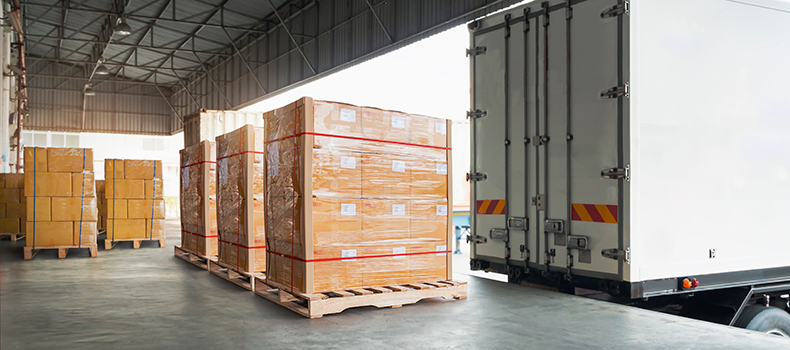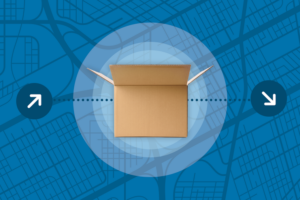Proper crating and packaging are the first and best line of defense in freight shipping. This is especially true for Less Than Truckload (LTL) freight, where shipments are frequently handled, transferred, and stacked at multiple points along their journey. With each handoff comes the increased risk of damage, making the right packaging approach not just a recommendation but a necessity.
Whether you’re shipping delicate electronics, heavy machinery, or one-of-a-kind furniture, ensuring your goods are well-protected helps prevent costly claims, delays, and disappointed customers. In this guide, we’ll walk through the key materials, methods, and moments to use crating and packaging—so you can ship smarter, safer, and with more confidence.
What Is Crating and Packaging?
Packaging refers to the techniques and materials used to contain, protect, and present goods during storage and transit. It covers everything from standard cardboard boxes and bubble wrap to blanket wrapping and shrink wrapping, which are common for furniture and appliances—especially in first-to-final mile delivery services on platforms like uShip.
Crating, meanwhile, is a type of heavy-duty packaging that’s especially important for LTL freight shipping, where cargo is handled multiple times between origin and destination. Crates are typically built from wood and offer strong, rigid protection for heavy, high-value, or irregularly shaped items.
Key difference? Packaging is often flexible and protective, while crating offers a custom-built, industrial-grade shell—essential for protecting freight in complex or long-distance shipping scenarios like LTL, international, or intermodal transit.
Crating vs. Regular Packaging: What’s the Difference?
| Criteria | Crating | Regular Packaging |
|---|---|---|
| Material | Wood, plywood, metal | Cardboard, plastic, foam |
| Durability | High—built for industrial transit and heavy loads | Moderate—best for lightweight or non-fragile goods |
| Customization | Fully customizable for item dimensions and transport needs | Mostly standardized sizing |
| Cost | Higher due to materials and labor | Lower due to mass production |
| Use Cases | LTL freight, machinery, art, antiques, electronics | Parcel shipping, retail goods, short-distance furniture |
| Protection Level | Maximum protection—ideal for multi-touchpoint shipping | Adequate for local or single-carrier moves |
When Is Crating Necessary?
Crating becomes essential when your shipment:
- Is traveling via LTL freight, where it will be loaded, unloaded, and transferred multiple times
- Contains fragile, high-value, or irreplaceable items (e.g., art, antiques, electronics)
- Involves heavy or oversized goods like appliances or industrial equipment
- Has an unusual shape that standard boxes can’t accommodate
- Requires international or intermodal shipping with customs clearance or containerization
- Will be stored for extended periods or exposed to moisture, vibration, or rough handling
For example, an LTL shipment of multiple vintage arcade machines would require custom crating to withstand warehouse transfers and stacking. On the flip side, a local move of a sofa might only need shrink wrap and padding.
Why Crating and Packaging Matter

1. Protection from Damage
During LTL shipping, your freight will be handled multiple times—forklifted, stacked, and sometimes dropped. Proper crating absorbs these impacts, shielding your goods from shock, vibration, and compression. It also guards against environmental threats like humidity, temperature extremes, and dust—especially critical for electronics, instruments, and medical equipment.
2. Theft and Tamper Resistance
A wooden crate is much harder to steal or tamper with than a soft-sided box. Crates can include tamper-evident seals, custom locks, and even embedded GPS trackers. These protections are particularly useful in high-theft risk categories like consumer electronics and collectibles.
3. Easier Handling in Freight Systems
Crates built with forklift access or skid bases save time, reduce injuries, and make for safer stacking. LTL terminals and warehouses are built for standardized handling, and a well-built crate fits seamlessly into those workflows. The result? Faster processing, fewer claims, and less time on the dock.
4. Long-Term Cost Savings
While crating requires upfront investment, it pays off in fewer damage claims, reduced admin costs, and better customer satisfaction. Investing in proper packaging can lead to significant cost savings by reducing product damage, minimizing returns, and improving delivery efficiency.
Best Materials for Crating and Packaging
Different shipments require different materials—especially for LTL.
- Wood (Lumber): Most LTL freight crates are made of pine or plywood. Heat-treated wood is mandatory for international shipping. It’s strong, affordable, and easy to customize.
- Plywood Panels: Used for crate walls and flooring. Marine-grade versions offer water resistance and structural stability.
- Metal: Aluminum and steel crates are used for military-grade or aerospace items. They’re overkill for most shipments but ideal for extreme durability or reusability.
- Plastic: Rotomolded plastic containers are excellent for weather resistance, repeat use, and stacking. Common in medical and industrial freight sectors.
- Foam: Foam padding is a must for interior support. Use polyethylene for rugged items and polyurethane or EPS for lighter, delicate goods.
- Cardboard: Not recommended as external packaging for LTL, but great as an inner layer or divider within a crate.
- Specialty Materials: Anti-static bags, vapor-barrier wraps, and temperature-regulating liners can be added for sensitive or regulated items.
Why Crating Is a Must for LTL Freight Shipping
LTL freight shipping combines your freight with others on the same truck. Your crate may be:
- Forklifted multiple times at distribution centers
- Stacked beneath or between other freight
- Shifted during cross-docking or trailer swaps
Because of this, most LTL carriers require items to be crated or palletized. Non-crated freight is far more likely to be damaged, delayed, or rejected entirely.
How to Build a Shipping Crate (Step-by-Step)
- Prep the Item
- Clean and dry the item
- Disassemble fragile or protruding parts
- Apply surface protection (e.g., anti-static wrap, blanket wrap)
- Cut Base Materials
- Add 2–3 inches of cushioning clearance on all sides
- Include skids for forklift access
- Add Interior Protection
- Use foam blocks, edge guards, or suspension systems
- Secure the item tightly to avoid movement
- Build Walls and Lid
- Use screws (not nails) for secure, removable joints
- Add bracing for large crates
- Label Everything Clearly
- Mark weight, “This Side Up,” and center of gravity
- Include waterproof documents and tracking labels
Common Mistakes to Avoid
- Using damaged or untreated wood for international shipments
- Skipping interior padding—even if the crate looks solid
- Overloading crates without proper weight distribution
- Forgetting to label handling instructions clearly
- Relying on cardboard for LTL freight
- Missing out on insurance or shipment documentation
When to Hire a Pro
You should bring in professional crating services when:
- Shipping high-value or fragile goods
- Handling oddly shaped or multi-part items
- Navigating international regulations
- Packing museum-grade or regulated cargo
- Crating frequently or at scale, where efficiency matters
uShip carriers that specialize in LTL, household goods, or specialty freight often include crating or blanket wrapping services—just ask during booking or select it as an add-on at checkout.
Conclusion
Whether you’re shipping across town or across the world, proper crating and packaging protect your freight from damage, delay, and loss. For LTL shipments, crating isn’t just helpful—it’s expected. By choosing the right materials, following sound crating practices, and leveraging professional services when needed, you reduce costs, streamline logistics, and deliver peace of mind.
TL;DR
Crating and packaging are essential for safe, efficient shipping—especially in LTL freight. Here’s what to remember:
- Crating = structural protection
- LTL freight requires durable, well-labeled crates
- Use wood, foam, and specialty materials tailored to the shipment
- Professional crating is worth it for fragile, high-value, or regulated items
- Proper crating = fewer claims, lower costs, and better delivery outcomes



